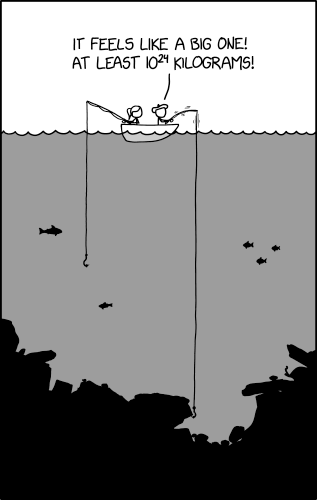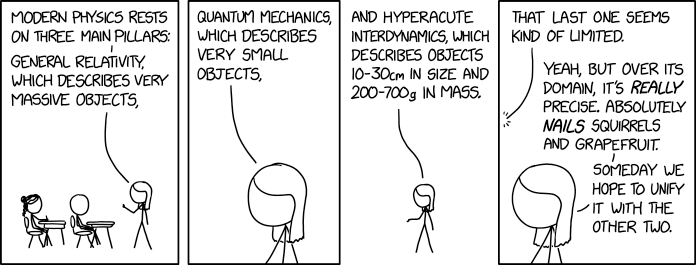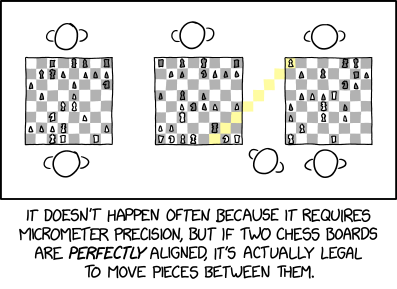IRA
Dec. 12th, 2025 06:03 pmtl;dr still waiting for things
The latest on that inherited IRA is that I got two email messages from Fidelity today, one saying that I needed to do something [unspecified] to transfer the money from BNY, and one saying specifically that BNY had told Fidelity that they, BNY, needed to talk to me.
So, I called BNY, and after various annoyances with their phone tree, talked to someone. He told me that they had no record yet of receiving the form I sent by next-day mail, but that if the form had arrived late Wednesday they might not be scanned until late today or even Monday. Also that once the form is scanned into the BNY system, it may take a few days before they actually transfer the money into my name, which would be necessary in order to move it to Fidelity.
So, I can (and probably will) call Monday to check that the form was in fact been received, but he thinks I should call later in the week, maybe Wednesday, maybe as late as Friday, and ask for my brand-new account number. Once I have that number, I have to fill out appropriate paperwork with Fidelity. *sigh*
I am both annoyed that even paying for next-day delivery, this is taking several days, and thinking that if I hadn’t paid for faster delivery I would be a few days further behind.
The man also said that once the funds are transferred, they will send me an acknowledgement by mail, including the new account number. However, waiting for that to arrive (rather than getting the information by phone) does not seem prudent, given the IRS deadline for the 2025 required minimum distribution.
The latest on that inherited IRA is that I got two email messages from Fidelity today, one saying that I needed to do something [unspecified] to transfer the money from BNY, and one saying specifically that BNY had told Fidelity that they, BNY, needed to talk to me.
So, I called BNY, and after various annoyances with their phone tree, talked to someone. He told me that they had no record yet of receiving the form I sent by next-day mail, but that if the form had arrived late Wednesday they might not be scanned until late today or even Monday. Also that once the form is scanned into the BNY system, it may take a few days before they actually transfer the money into my name, which would be necessary in order to move it to Fidelity.
So, I can (and probably will) call Monday to check that the form was in fact been received, but he thinks I should call later in the week, maybe Wednesday, maybe as late as Friday, and ask for my brand-new account number. Once I have that number, I have to fill out appropriate paperwork with Fidelity. *sigh*
I am both annoyed that even paying for next-day delivery, this is taking several days, and thinking that if I hadn’t paid for faster delivery I would be a few days further behind.
The man also said that once the funds are transferred, they will send me an acknowledgement by mail, including the new account number. However, waiting for that to arrive (rather than getting the information by phone) does not seem prudent, given the IRS deadline for the 2025 required minimum distribution.
more IRA paperwork
Dec. 8th, 2025 05:45 pmI went out in the cold today, took a shuttle buses that was replacing the central part of the green line, and walked into a Fidelity office to get the medallion signature I need on the BNY form.
They provided the medallion for my signature, but the woman who handled that told me she thought I would need to redo the _Fidelity_ forms once BNY had transferred the funds, because the inherited IRA would need a brand-new account, not the one I created for the purpose a few weeks ago. Having printed and signed those forms, I asked her to keep them, in case they are usable. (She may have been thinking I'm trying to move the money into an account that already has money in it.)
She also said I do need to put the form with the medallion signature in the mail to BNY, Fidelity can't send it to them electronically. I brought the medallion-ized form home with me, but before I put it in the mail I'm going to scan it and upload the scan to the Fidelity website, in case the previous advisor is right and they can do this electronically.
So that will be another outing in the cold, to a post office, in the hope the letter gets to BNY in good season despite both Christmas packages and the Republican effort to destroy the postal service. Fortunately, there are post office branches at this end of the green line, the part that's still running trolleys.
ETA: I scanned the document, and just uploaded it to the Fidelity website, with a message explaining that I will be mailing the hardcopy to BNY tomorrow.
They provided the medallion for my signature, but the woman who handled that told me she thought I would need to redo the _Fidelity_ forms once BNY had transferred the funds, because the inherited IRA would need a brand-new account, not the one I created for the purpose a few weeks ago. Having printed and signed those forms, I asked her to keep them, in case they are usable. (She may have been thinking I'm trying to move the money into an account that already has money in it.)
She also said I do need to put the form with the medallion signature in the mail to BNY, Fidelity can't send it to them electronically. I brought the medallion-ized form home with me, but before I put it in the mail I'm going to scan it and upload the scan to the Fidelity website, in case the previous advisor is right and they can do this electronically.
So that will be another outing in the cold, to a post office, in the hope the letter gets to BNY in good season despite both Christmas packages and the Republican effort to destroy the postal service. Fortunately, there are post office branches at this end of the green line, the part that's still running trolleys.
ETA: I scanned the document, and just uploaded it to the Fidelity website, with a message explaining that I will be mailing the hardcopy to BNY tomorrow.
cat health worries
Dec. 6th, 2025 09:13 pmFirst: The cat in question seems to be basically well.
So,![[personal profile]](https://www.dreamwidth.org/img/silk/identity/user.png) cattitude has been worrying on and off that our cat Kaja was getting skinny. A few days agp. that got to the point of calling the vet and then taking the cat in for a check-up.
cattitude has been worrying on and off that our cat Kaja was getting skinny. A few days agp. that got to the point of calling the vet and then taking the cat in for a check-up.
At the exam, the vet told Cattitude that Kaja has not lost weight; if anything, she has gained an ounce or two. What's going on is, the cat has lost some muscle mass, which has led to some redistribution of her weight, and what Cattitude noted was that her legs were thinner. The vet said it was probably arthritis, drew blood to test for some more serious problems, and sent her home.
We got the results this morning, and they are reassuring: Kaja's kidney function, liver function, and thyroid are all fine. So is her blood sugar.
The email said we could have them do X-rays to check for arthritis, but that would require sedating the cat.
Or, they can assume it's arthritis, and give her monthly injections of a pain-killer to treat that, and see how she's doing in a few months.
The third choice is to just monitor the cat's health for now, and give her omega-3 supplements. We need to discuss the choices, but it's Saturday, and none of them involves "so call the vet and set this up right away."
So,
At the exam, the vet told Cattitude that Kaja has not lost weight; if anything, she has gained an ounce or two. What's going on is, the cat has lost some muscle mass, which has led to some redistribution of her weight, and what Cattitude noted was that her legs were thinner. The vet said it was probably arthritis, drew blood to test for some more serious problems, and sent her home.
We got the results this morning, and they are reassuring: Kaja's kidney function, liver function, and thyroid are all fine. So is her blood sugar.
The email said we could have them do X-rays to check for arthritis, but that would require sedating the cat.
Or, they can assume it's arthritis, and give her monthly injections of a pain-killer to treat that, and see how she's doing in a few months.
The third choice is to just monitor the cat's health for now, and give her omega-3 supplements. We need to discuss the choices, but it's Saturday, and none of them involves "so call the vet and set this up right away."
dentist, and insurance
Dec. 4th, 2025 06:22 pmI went to the dentist yesterday to get my teeth cleaned, and on my way out made a follow-up appointment. When I got home, I realized that they'd given me an earlier appointment than I thought, or wanted, so I had to call them today.
I also got halfway through filing a claim for insurance reimbursement last night, before realizing that I didn't have the right paperwork. In the process, I found out how to file a claim for the glasses I had made a couple of months ago, which I'd thought would be complicated.
Those forms require a National Provider Identification number, which can be found online. Praise wikipedia! Googling didn't find me the relevant website, but the Wikipedia article has a link to it. The website is searchable by anyone, if you have the provider's name and location, and "Arlington, MA" was sufficient, without the street address.
Having talked to the dentist's office, I now have a 3:00 appointment for my next cleaning, and have submitted the insurance claim.
I also got halfway through filing a claim for insurance reimbursement last night, before realizing that I didn't have the right paperwork. In the process, I found out how to file a claim for the glasses I had made a couple of months ago, which I'd thought would be complicated.
Those forms require a National Provider Identification number, which can be found online. Praise wikipedia! Googling didn't find me the relevant website, but the Wikipedia article has a link to it. The website is searchable by anyone, if you have the provider's name and location, and "Arlington, MA" was sufficient, without the street address.
Having talked to the dentist's office, I now have a 3:00 appointment for my next cleaning, and have submitted the insurance claim.
Wednesday reading
Dec. 3rd, 2025 09:52 pmBooks read in the last couple of months:
Sofia Samatar, The Winged Histories:. This is odd and somewhat disjointed, set in the same secondary world as A Stranger in Olondria (which I read ages ago and remember very little about). The threads all come together at the end. I’d been displeased earlier because I thought we’d lost both the first narrative voice, which I liked, and the continuity of the narrator's story. The book does get back to her story, or at least her sister and cousin’s stories.
James Thurber, The Thirteen Clocks: read aloud, because Adrian had never read it. Still delightful, a fairy tale set in a world where people have at least heard of fairy tales.
Lorraine Baston, Rules: A Short History of What We Live By. Baston talks about rules as measuring devices, as sets of instructions, and as models, and various shifts in meaning over time. She talks about thick and thin rules, thick rules being ones with (more) examples and details, and which anticipate more exceptions. A about the change in how people learn/are taught all sorts of things, including math. I enjoyed this, and if that description sounds interesting you probably will too.
Edward Eager, The Time Garden: Children's magical adventures while spending the summer with a relative because their parents are in London, working on the premiere of a play. Another read-aloud, this one was new to me, and fun.
Helen Scales, What the Wild Sea Can Be: The state, as of 2023, and possible futures of the ocean and ocean life in the Anthropocene, according to an oceanographer. I asked the library for this because I liked the author's book about mollusks.
Sofia Samatar, The Winged Histories:. This is odd and somewhat disjointed, set in the same secondary world as A Stranger in Olondria (which I read ages ago and remember very little about). The threads all come together at the end. I’d been displeased earlier because I thought we’d lost both the first narrative voice, which I liked, and the continuity of the narrator's story. The book does get back to her story, or at least her sister and cousin’s stories.
James Thurber, The Thirteen Clocks: read aloud, because Adrian had never read it. Still delightful, a fairy tale set in a world where people have at least heard of fairy tales.
Lorraine Baston, Rules: A Short History of What We Live By. Baston talks about rules as measuring devices, as sets of instructions, and as models, and various shifts in meaning over time. She talks about thick and thin rules, thick rules being ones with (more) examples and details, and which anticipate more exceptions. A about the change in how people learn/are taught all sorts of things, including math. I enjoyed this, and if that description sounds interesting you probably will too.
Edward Eager, The Time Garden: Children's magical adventures while spending the summer with a relative because their parents are in London, working on the premiere of a play. Another read-aloud, this one was new to me, and fun.
Helen Scales, What the Wild Sea Can Be: The state, as of 2023, and possible futures of the ocean and ocean life in the Anthropocene, according to an oceanographer. I asked the library for this because I liked the author's book about mollusks.
signed up for a 2026 Medicare plan
Nov. 30th, 2025 04:35 pmI signed up for a 2026 Medicare Advantage (part C) plan today. I had it narrowed it down to two plans, and decided yesterday which one I like better. There are minor differences--in particular, the one I chose has a lower copay for physical therapy--but there don't seem to be significant differences. It also has a slightly better rating, according to the Medicare.gov site, by half a star, but that might not be significant (an average 3.7 rounds to 3.5, and 3.8 rounds to 4).
Now, it should just be a matter of telling various doctors and pharmacies that my insurance has changed as of Jan. 1st, and maybe dealing with a new mail-order pharmacy for the Kesimpta.
They gave me a confirmation number, and if I don't hear from the company in the next few days I will call. (Normal open enrollment ends Dec. 7, but I have a "special election period" that runs through February.)
Now, it should just be a matter of telling various doctors and pharmacies that my insurance has changed as of Jan. 1st, and maybe dealing with a new mail-order pharmacy for the Kesimpta.
They gave me a confirmation number, and if I don't hear from the company in the next few days I will call. (Normal open enrollment ends Dec. 7, but I have a "special election period" that runs through February.)
Look! I remembered to post before December started this year!
Nov. 30th, 2025 02:42 amHello, friends! It's about to be December again, and you know what that means: the fact I am posting this actually before December 1 means ![[staff profile]](https://www.dreamwidth.org/img/silk/identity/user_staff.png) karzilla reminded me about the existence of linear time again. Wait, no -- well, yes, but also -- okay, look, let me back up and start again: it's almost December, and that means it's time for our annual December holiday points bonus.
karzilla reminded me about the existence of linear time again. Wait, no -- well, yes, but also -- okay, look, let me back up and start again: it's almost December, and that means it's time for our annual December holiday points bonus.
The standard explanation: For the entire month of December, all orders made in the Shop of points and paid time, either for you or as a gift for a friend, will have 10% of your completed cart total sent to you in points when you finish the transaction. For instance, if you buy an order of 12 months of paid time for $35 (350 points), you'll get 35 points when the order is complete, to use on a future purchase.
( The fine print and much more behind this cut! )
Thank you, in short, for being the best possible users any social media site could possibly ever hope for. I'm probably in danger of crossing the Sappiness Line if I haven't already, but you all make everything worth it.
On behalf of Mark, Jen, Robby, and our team of awesome volunteers, and to each and every one of you, whether you've been with us on this wild ride since the beginning or just signed up last week, I'm wishing you all a very happy set of end-of-year holidays, whichever ones you celebrate, and hoping for all of you that your 2026 is full of kindness, determination, empathy, and a hell of a lot more luck than we've all had lately. Let's go.
The standard explanation: For the entire month of December, all orders made in the Shop of points and paid time, either for you or as a gift for a friend, will have 10% of your completed cart total sent to you in points when you finish the transaction. For instance, if you buy an order of 12 months of paid time for $35 (350 points), you'll get 35 points when the order is complete, to use on a future purchase.
( The fine print and much more behind this cut! )
Thank you, in short, for being the best possible users any social media site could possibly ever hope for. I'm probably in danger of crossing the Sappiness Line if I haven't already, but you all make everything worth it.
On behalf of Mark, Jen, Robby, and our team of awesome volunteers, and to each and every one of you, whether you've been with us on this wild ride since the beginning or just signed up last week, I'm wishing you all a very happy set of end-of-year holidays, whichever ones you celebrate, and hoping for all of you that your 2026 is full of kindness, determination, empathy, and a hell of a lot more luck than we've all had lately. Let's go.





